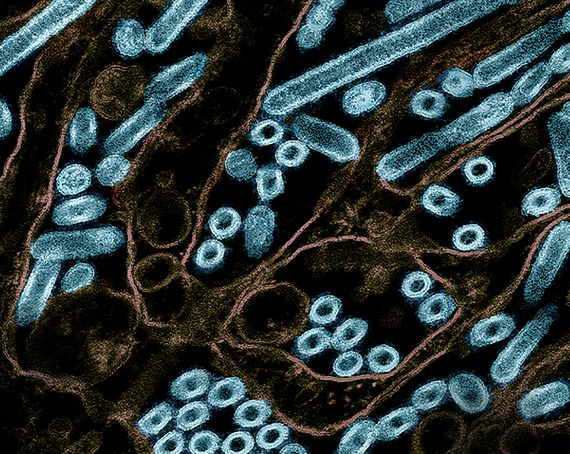| Monday, Oct. 28, 2024  Colorized transmission electron micrograph of avian influenza A H5N1 virus particles (teal) grown in Madin-Darby Canine Kidney (MDCK) epithelial cells. Microscopy by CDC; repositioned and recolored by NIAID. Credit: CDC and NIAID HPAI H5N1 influenza virus, isolated from the eye of a farm worker who became infected through contact with dairy cows, was lethal in mice and ferrets infected in a high-containment laboratory environment, a new NIAID-funded study in Nature shows. The study also showed that the virus isolated from the worker, who experienced mild eye disease (conjunctivitis), could be transmitted through the air between separated ferrets and might be capable of binding to and replicating in human respiratory tract cells. The researchers, led by a team from the University of Wisconsin, speculate that multiple exposures to seasonal human influenza viruses might provide people with low levels of protection against currently circulating HPAI H5N1 viruses – though additional study is needed. Every effort should be made, they say, to contain HPAI H5N1 outbreaks in dairy cattle to limit the possibility of further human infections. National Institute of Allergy and Infectious Diseases | National Institutes of Health | | | |





No comments:
Post a Comment